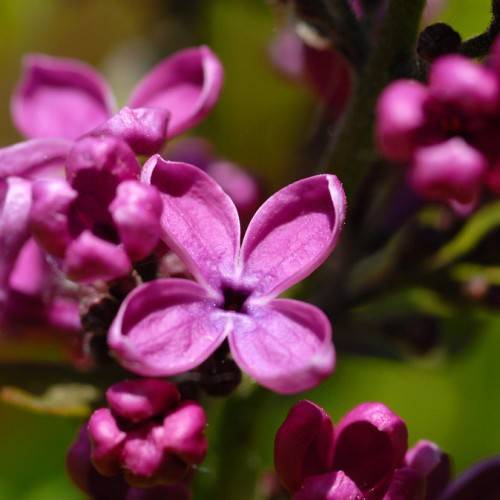
common lilac
Syringa vulgaris 'Charles Joly'
Cycle:
Perennial
Watering:
Average
Hardiness Zone:
3 - 7
Flowers:
Flowers
Sun:
Full sun
Leaf:
Yes
Growth Rate:
Moderate
Maintenance:
Low
watering
Common lilacs require an average amount of watering throughout the year, with the frequency depending on the season and soil type. In spring and summer months, water the common lilac every week and monitor soil moisture regularly. Make sure the soil always stays moist but not water-logged. During the fall and winter months, reduce the watering frequency to every 2 to 3 weeks, and only water if the soil is dry. If the weather is particularly dry, water the common lilac every 10 to 14 days.
sunlight
Common Lilacs (Syringa vulgaris 'Charles Joly') require 6-7 hours of direct sunlight per day for optimal growth. This vulnerability to full sun means that Gardeners can experience a wide range of colors, sizes, and shapes by providing partial sun or shade in certain areas, as well as choosing the right location for the planting site. For all these varieties, the ideal hours of sunlight are morning sun only, with shade during the hottest hours of the day. Plants should be grown in well-draining soil and require moist but not soggy soil. It is important to water these plants regularly and to fertilize them in early spring.
pruning
The best time for pruning for a common lilac (Syringa vulgaris 'Charles Joly') is in early spring, just as the new buds begin to form. Be sure the plant has at least 3 years worth of growth before attempting to prune it, as it will produce more flowers when established. When pruning, remove any dead or diseased branches and thin out any overcrowded branches that have too close of a spacing between them. This will help improve air circulation and encourage a healthier plant. Additionally, cut back any overgrown branches up to about 1-third of their length. Try your best to avoid cutting off any new growth or flower buds. When pruning, use sharp clean pruners or hedge shears and cut all branches back close to a bud or natural branching pattern. After the pruning is complete, apply a layer of compost or mulch to help the soil retain moisture and keep the roots cool. By following these steps of pruning at the right time, you will help ensure that your common lilac (Syringa vulgaris 'Charles Joly') will remain healthy and vigorous and will produce larger and more abundant flowers in the spring.
